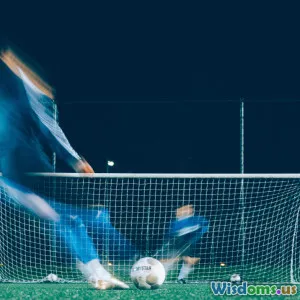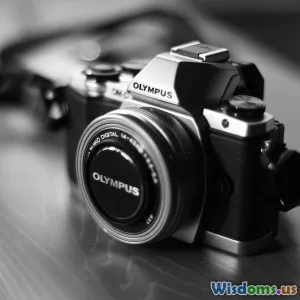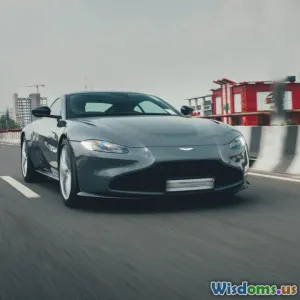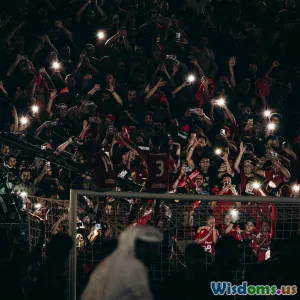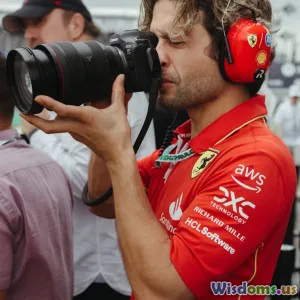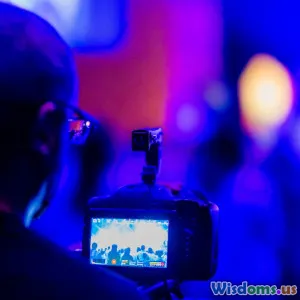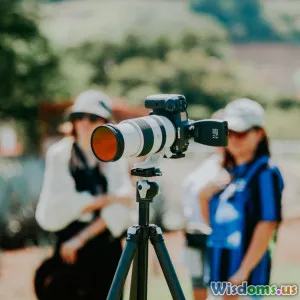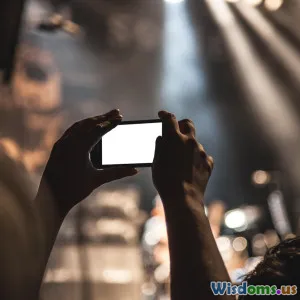
Can Smartphone Cameras Succeed at Busy Sports Events
16 min read Examines if modern smartphone cameras can capture quality photos at crowded sports events. (0 Reviews)
Can Smartphone Cameras Succeed at Busy Sports Events?
Capturing the energy of a live sports event on camera is every fan's dream. With stadiums packed with cheering crowds, dazzling lights, and fast-paced action, the big question lingers: can a smartphone camera possibly match the excitement and clarity needed to do these scenes justice? Let’s explore the capabilities, practical limitations, and unexpected advantages of using smartphones for sports photography in bustling venues, as well as how to make the most of them.
The Evolution of Smartphone Cameras
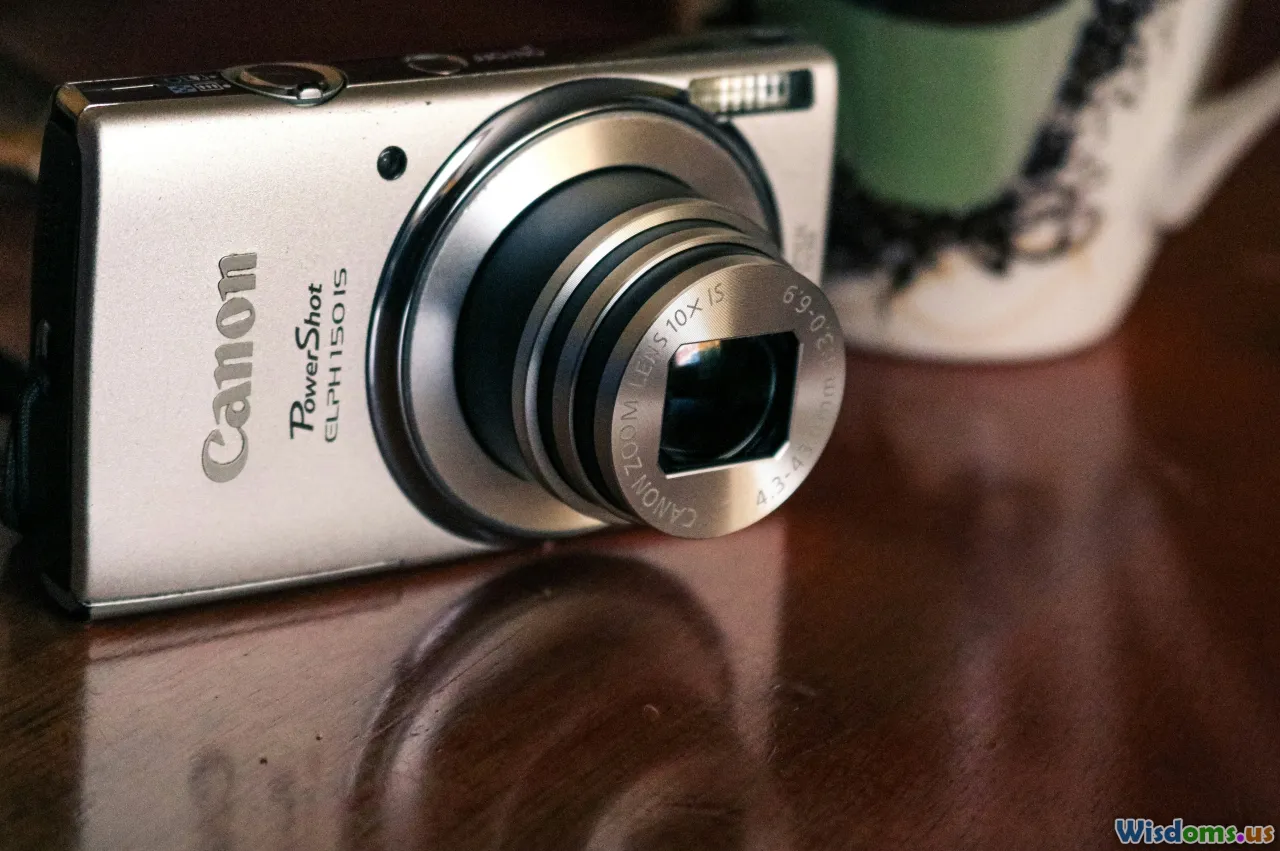
Smartphones have come a long way in just over a decade. Early phone cameras struggled with blurry action and dim lighting, but today’s flagships boast powerful technology rivaling basic point-and-shoot cameras. Devices like the iPhone 15 Pro Max, Google Pixel 8 Pro, and Samsung Galaxy S24 Ultra sport sophisticated hardware: multi-lens setups, blazing-fast processors, and AI-driven computational photography.
These innovations mean that modern phones can now handle complex imaging tasks, like:
- Multi-frame HDR for scenes with stadium lighting contrast.
- Fast autofocus and tracking for moving players.
- Optical and digital zoom that gets you closer from stands.
- RAW photo capture for in-depth editing later.
Fact: The iPhone 15 Pro Max features a 5x optical telephoto lens, and several Android flagships offer 10x hybrid zoom, blending hardware and software to close the gap to the field.
Instagram feeds are brimming with pro-grade sports shots taken on phones — a testament to just how far mobile cameras have evolved in a short time.
The True Challenge: Capturing Speed and Distance
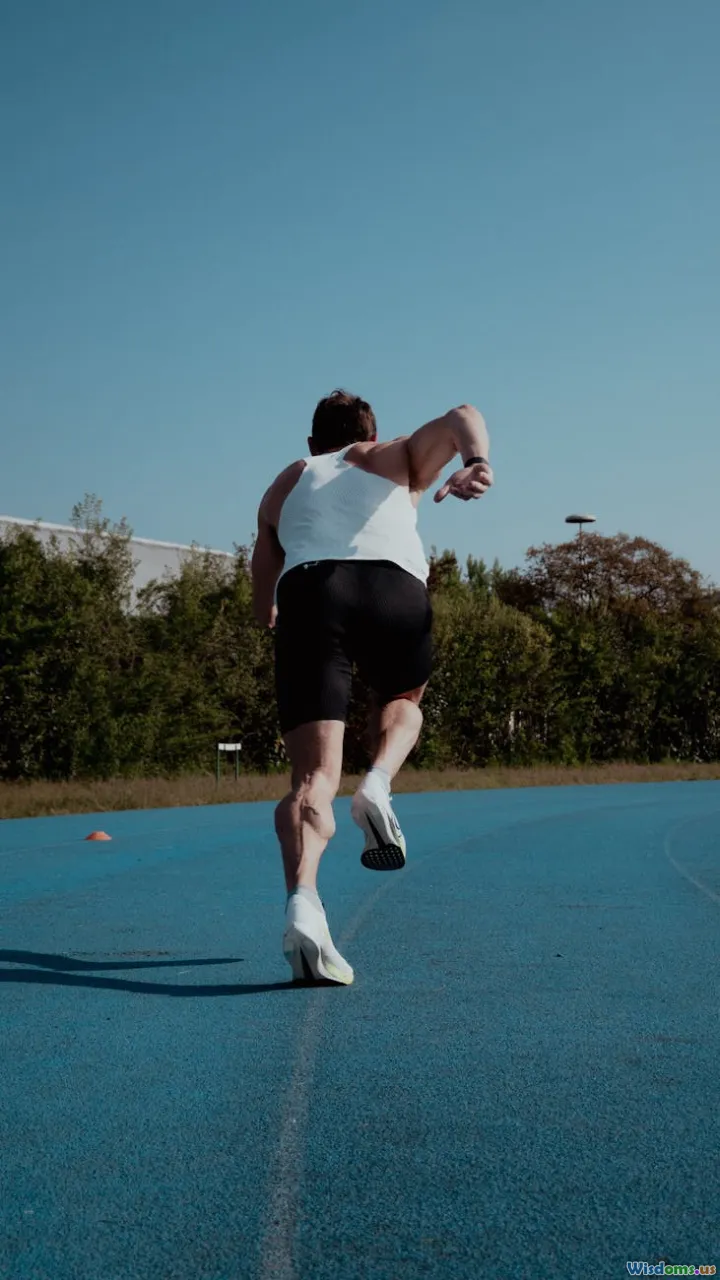
Even the most advanced phones face two big hurdles at stadium events: high-speed action and long shooting distances.
Freeze the Moment
Capturing sharp images of athletes in full sprint—or a basketball player mid-air—requires:
- High shutter speeds (often 1/1000 sec or faster)
- Advanced autofocus and subject tracking.
While smartphone cameras mimic these settings, they rely on tiny sensors that can't always gather enough light. This may lead to a slight motion blur or higher noise in pictures compared to professional DSLRs, especially as dusk falls and the venue lights take over.
Reach Across the Arena
Zoom lenses on phones can't match the optical reach of a 400mm pro telephoto lens. Even with solid digital zooms, image detail gets softer, and digital artifacts can creep in. While phones like the Samsung S24 Ultra push optical limits impressively, taking clear, close-ups from the upper bleachers remains tough.
Example: Trying to freeze a soccer forward’s breakaway from clear across the pitch is much easier for a pro with a long lens. A phone user must get creative—catching wider shots or using burst mode for multiple frames.
The World of Computational Photography
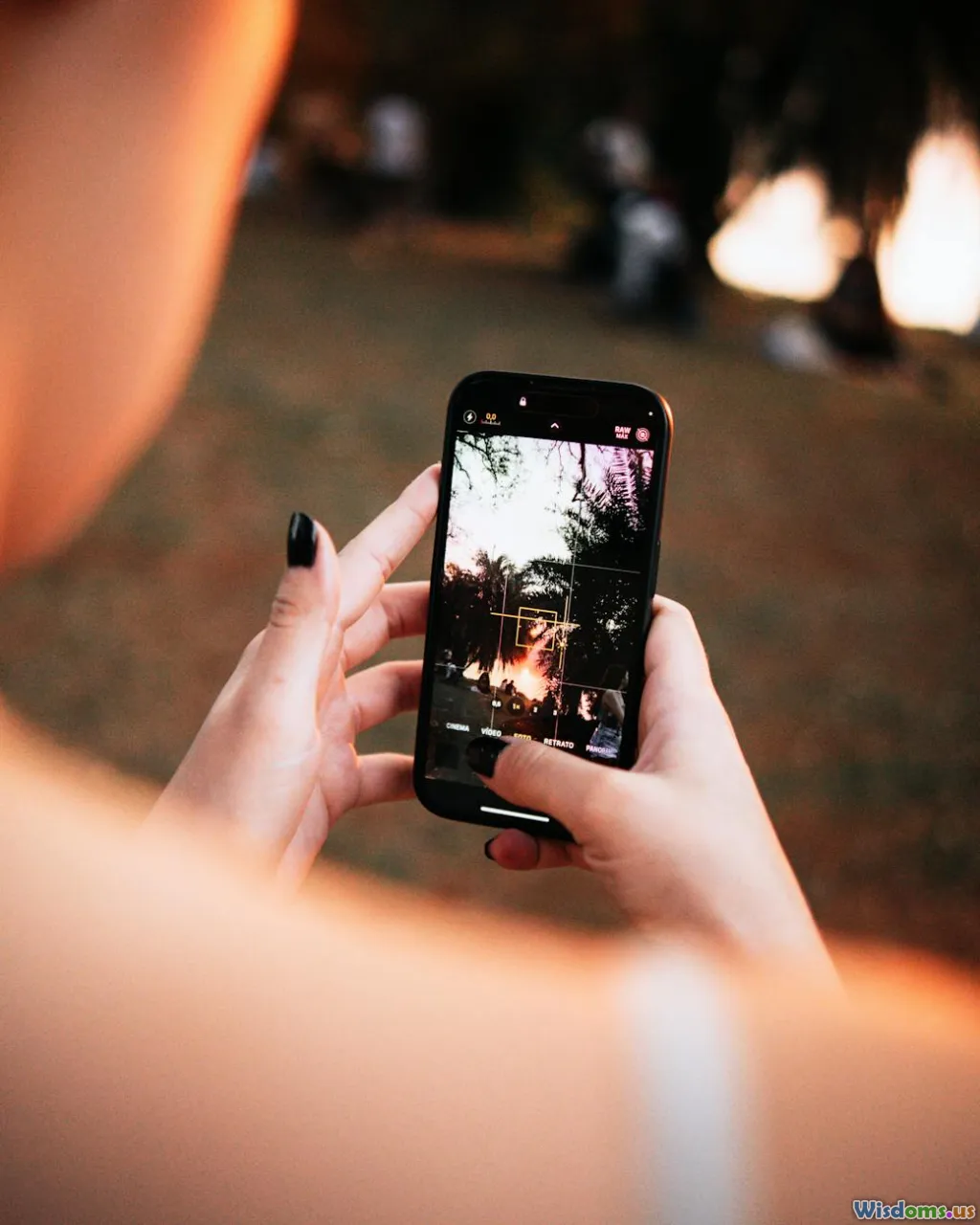
Where hardware falls short, software leaps in. Computational photography—phones using AI and algorithms to process images—can create striking results unimaginable five years ago.
AI-Assisted Focus and Exposure
Phones leverage:
- Scene recognition: Detecting fast action, crowd faces, or stadium lighting instantly.
- Intelligent exposure: Adjusting for spotlights or darkened stands.
- Subject separation: Emphasizing athletes while softening backgrounds.
Apple’s Smart HDR and Google’s Motion Photos use machine learning to enhance action shots and even auto-select the best from burst sequences—handy for the moment you didn’t quite hit the shutter at the right time.
Motion and Burst Modes
Many flagship smartphones have dedicated Sports or Action modes. These:
- Raise shutter speed automatically.
- Capture rapid bursts, letting users pick the sharpest frame.
Tip: When shooting in burst, slightly pan the phone to track your subject—just like a professional shooter.
Mastering Night and Indoor Lighting
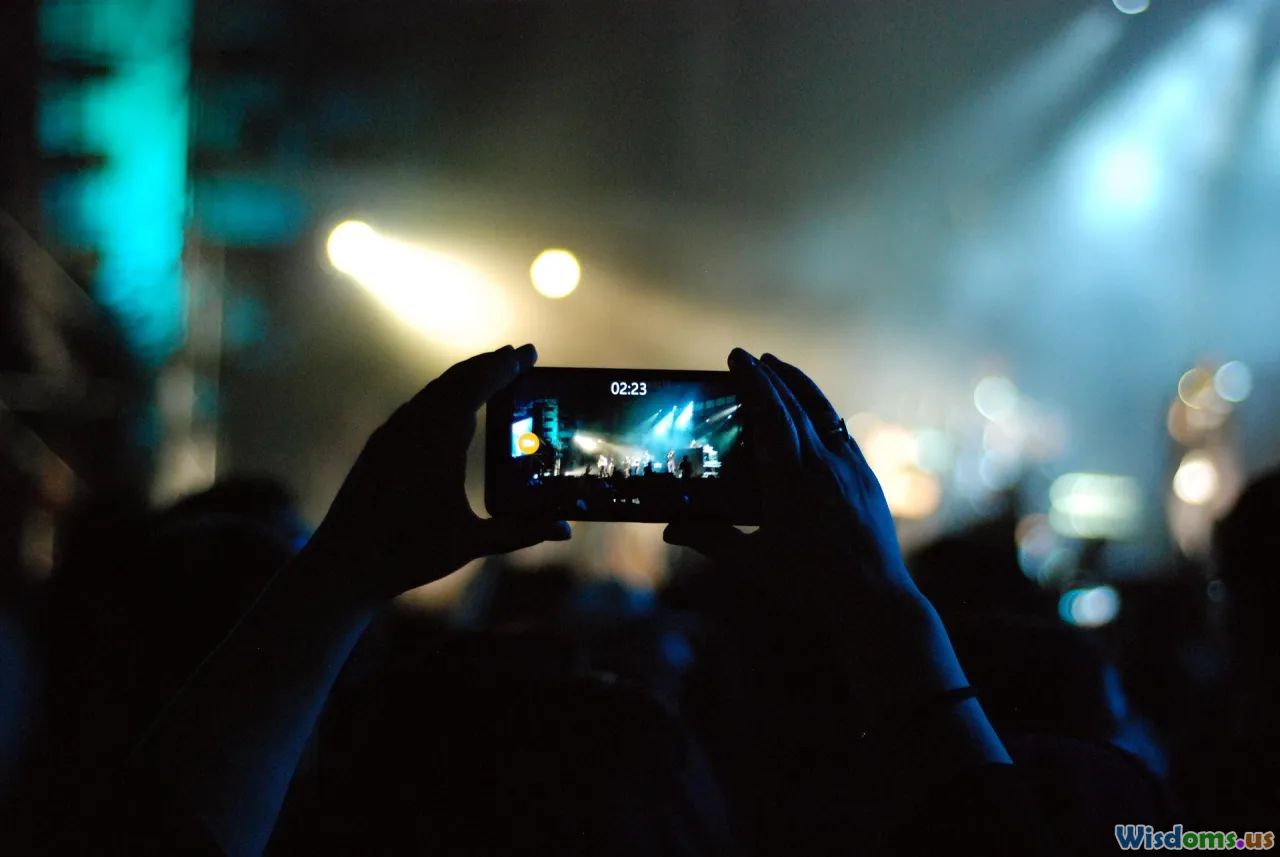
Night games or indoor basketball arenas push smartphone cameras to their limits. Here’s how they fare, and what you can do to boost results.
Low-Light Constraints
Smartphones have small sensors, which collect less light than bulky cameras. This can introduce image noise, color smearing, or motion blur.
- Portrait mode and Night mode may compensate somewhat, but details can be murky under stadium spotlights.
- Artificial Intelligence steps in—for example, reducing grain or optimizing color temperature during and after shooting.
Real-World Performance
- The Google Pixel line excels in software-driven night shots, producing clear images even in shadowy stands.
- Apple’s Night Mode gives good results for stills but still lags with moving subjects.
Advice: Stand near well-lit walkways or under roof lighting to help your phone capture sharper, less noisy shots.
Zoom Showdown: Phones Versus Dedicated Cameras
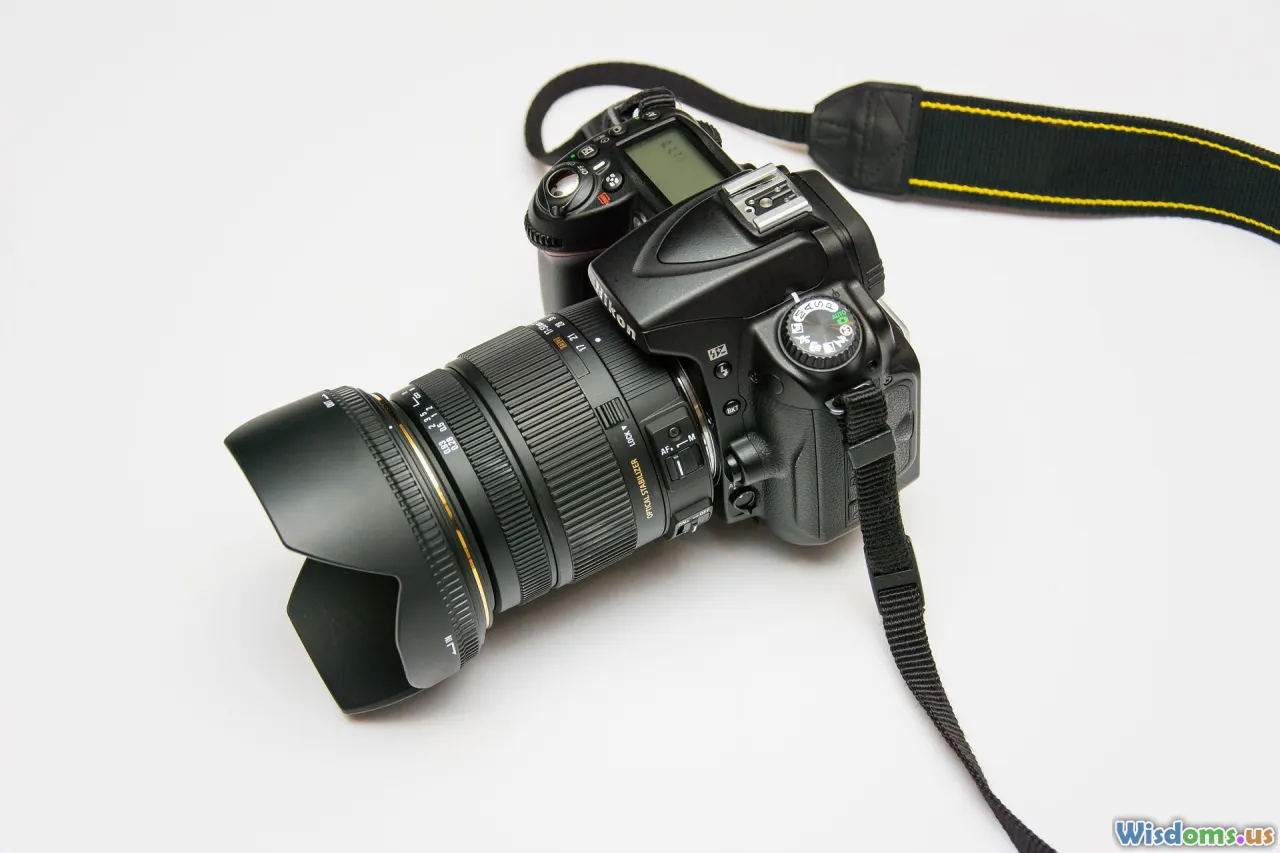
Few would expect smartphones to consistently compete with dedicated cameras at sports events. But the gap is narrowing, and in some areas, phones hold surprising advantages.
Optical vs. Digital Zoom
Pro-level DSLR and mirrorless cameras use monster-sized telephoto lenses (200mm-600mm) to capture close action. Phones rely on:
- Short-range optical zoom (3x-10x typical)
- Lossy digital magnification beyond that
Above 10x zoom, even top-tier phones degrade in sharpness. That said, for wider scene shots—crowd reactions, goal celebrations, or coaches’ sidelines orders—phones do exceedingly well.
Portability Triumphs
Example: A DSLR with a pro lens can weigh 5+ pounds and draw the attention of stewards or security. Phones sneak in anywhere, ready at a moment’s notice. Fans in Munich caught Manuel Neuer’s famous 2023 penalty save via phones, not pro cameras.
Fact: According to Flickr’s 2023 trends, 60% of all sports images on the platform came from smartphones—showcasing their dominance in fan photography.
Pro Tips for Stunning Smartphone Sports Photos
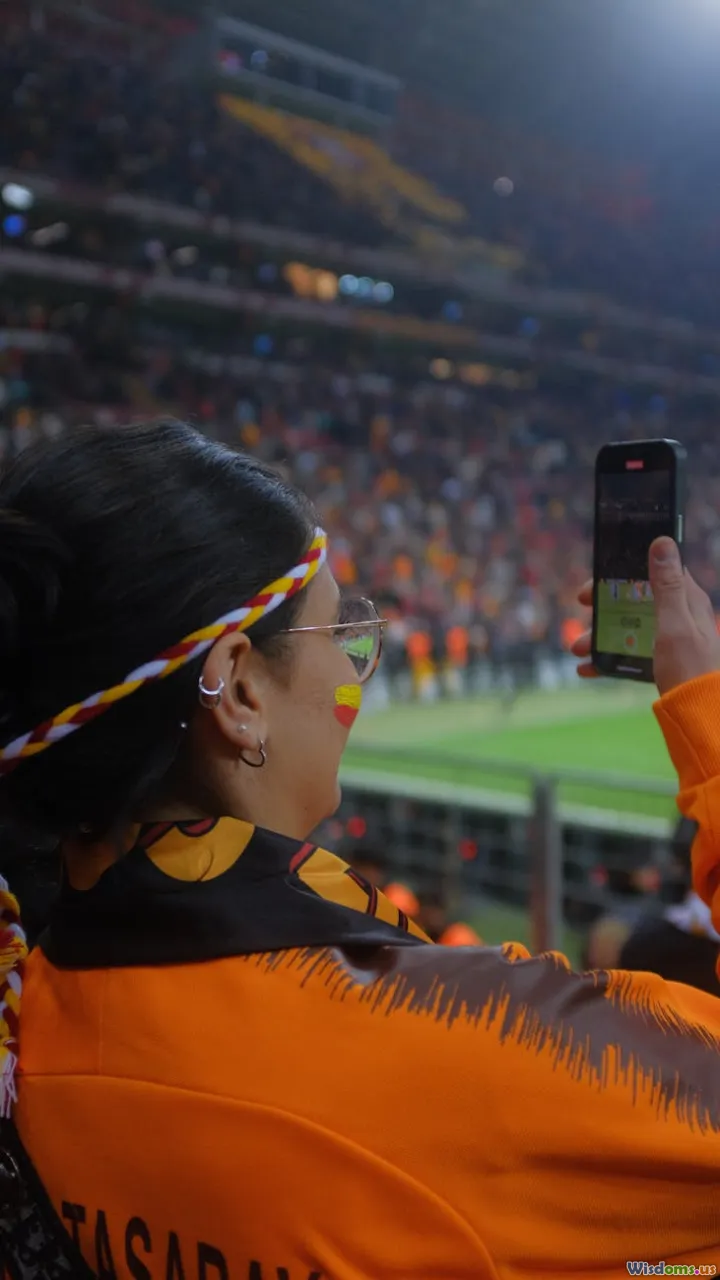
Even if physics is stacked against mobile shooters, you can still punch up your results. Here’s how:
- Get Closer When Possible: Move toward the field; even 15–20 meters can mean the difference between a recognizably sharp player and a blurry blot.
- Use Burst or Action Mode: Fire off several shots in quick succession—one frame may capture the perfect pose.
- Stabilize Your Shot: Use both hands, lean elbows on barriers, or invest in a compact tripod or monopod.
- Tap to Focus: Tapping the subject helps your phone lock focus even amidst chaotic backgrounds.
- Boost Exposure Intelligently: Slide exposure up a touch if jerseys look too dark under stadium glare.
- Edit Smartly Later: Subtle tweaks—cropping, contrast, and sharpening—can elevate an average photo. Apps like Snapseed, Adobe Lightroom Mobile, and VSCO are ideal for phone edits.
Pro Tip: Wipe your lens before shooting; stadium snacks or greasy hands are notorious culprits for hazy pictures!
The Unexpected Advantages Over Traditional Cameras
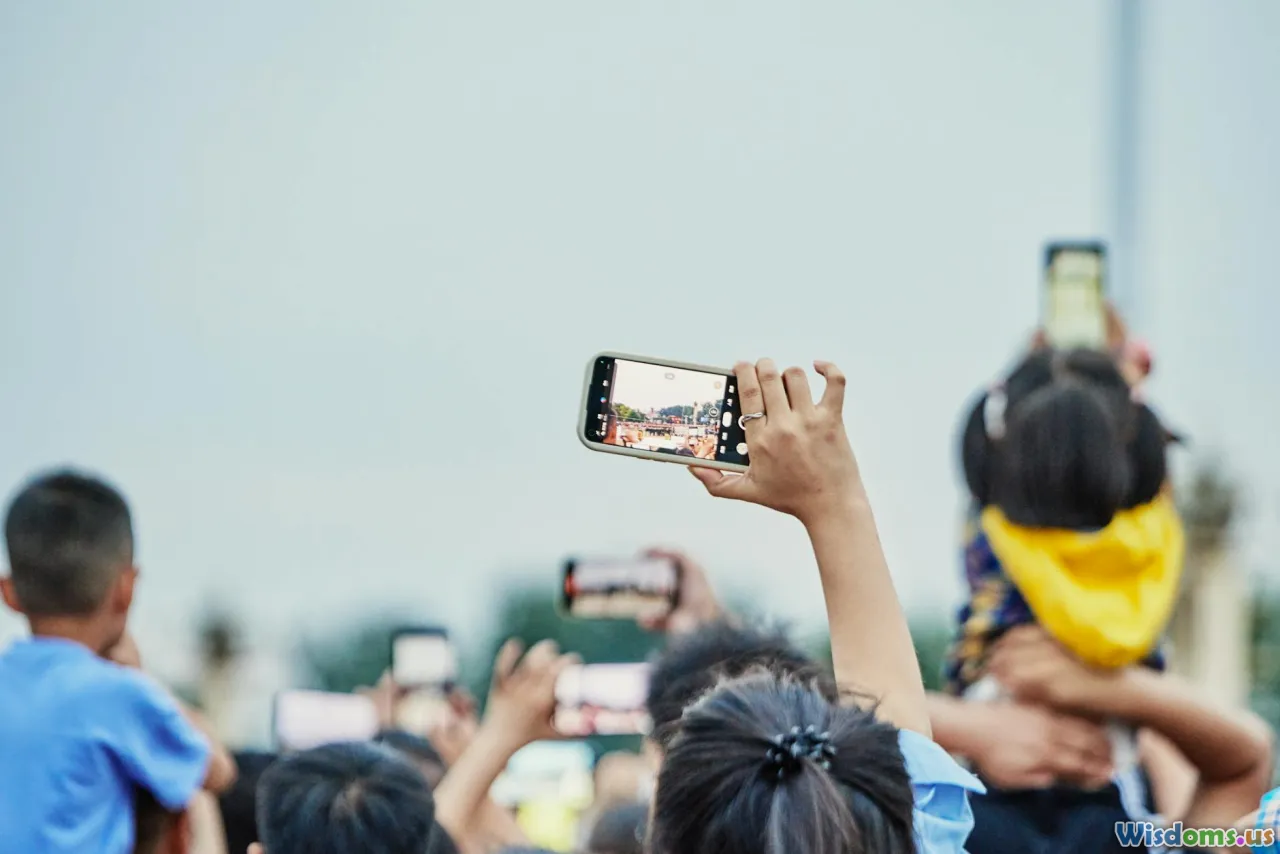
For fans, the smartphone gives something pro cameras rarely offer: real-time sharing and social storytelling.
Go Live, Instantly
You spot a thunderous goal or a record-breaking lap time. With a phone in your pocket, you can:
- Share bursts immediately to Instagram Stories or X.
- Livestream the action to friends or global audiences.
- Build energetic TikTok clips straight from your seat.
Example
Fans filming Novak Djokovic’s historic win at the 2023 Wimbledon did more than capture memories—they created viral clips watched by millions within hours.
Capture the Full Experience
Phones make it simple to document more than just the game: ambient crowd shots, group selfies, halftime entertainment, or a jubilant wave. Pro cameras often miss these authentic moments the fan cares about most.
In fact, a 2022 SportsBusiness study indicated that 70% of fans valued the behind-the-scenes and sideline stories that only smartphones tend to capture.
When Are Smartphones the Best – and Worst – Choice?
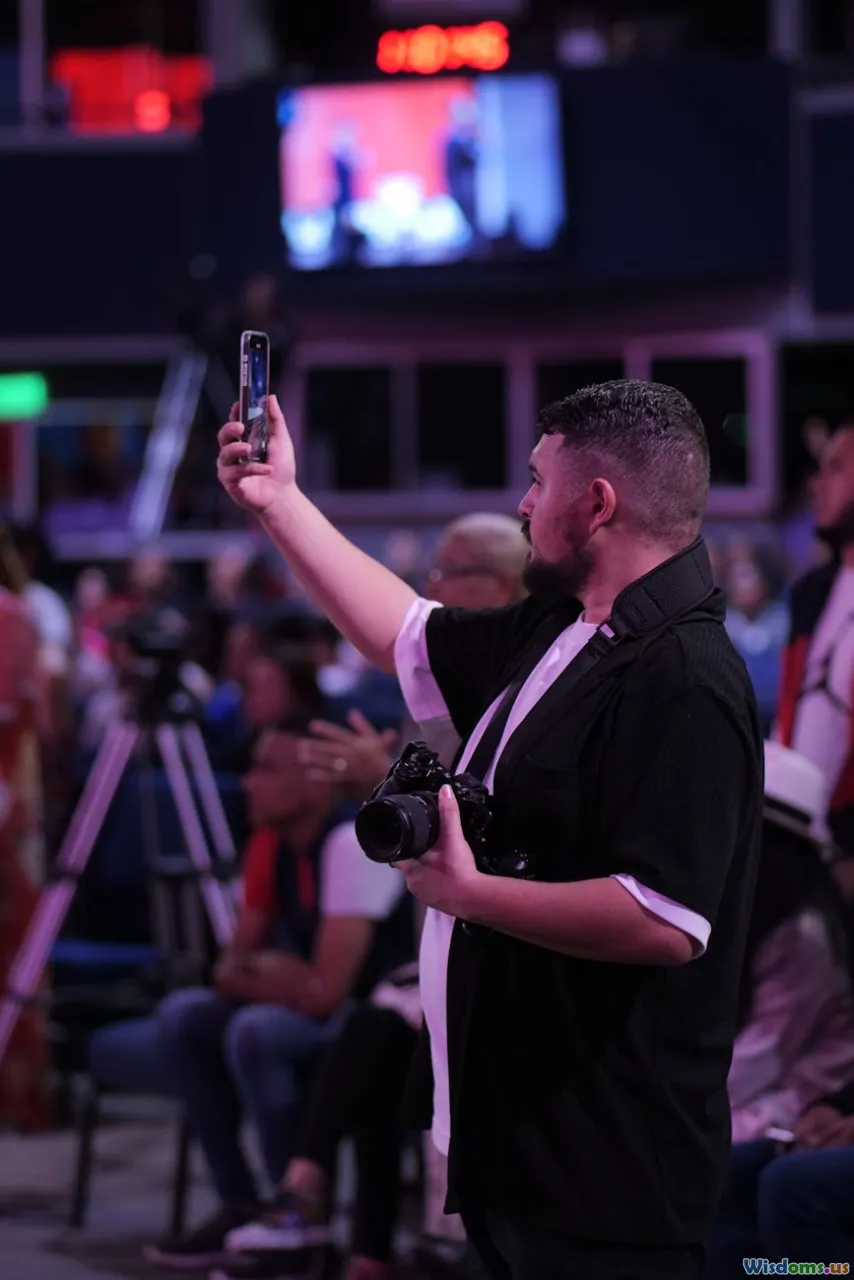
Smartphones shine when you're:
- Shooting wide or mid-range scenes.
- Want quick, shareable social posts.
- Need portability or a low profile—many venues don’t allow bulky camera gear.
But they struggle:
- For tight-cropped action across distance (e.g., a close-up of the opposing team’s goalie across a soccer pitch).
- In extreme low-light or adverse weather without specialty gear.
- When pro-level prints or detailed large-format photos are a priority (e.g., media outlets or sports magazines still rely on dedicated cameras).
Fan-captured smartphone videos still make their way into highlight reels, club retrospectives, and news segments—underscoring their “good enough” status for most live-event storytelling.
Maximizing Results: Accessory and App Recommendations
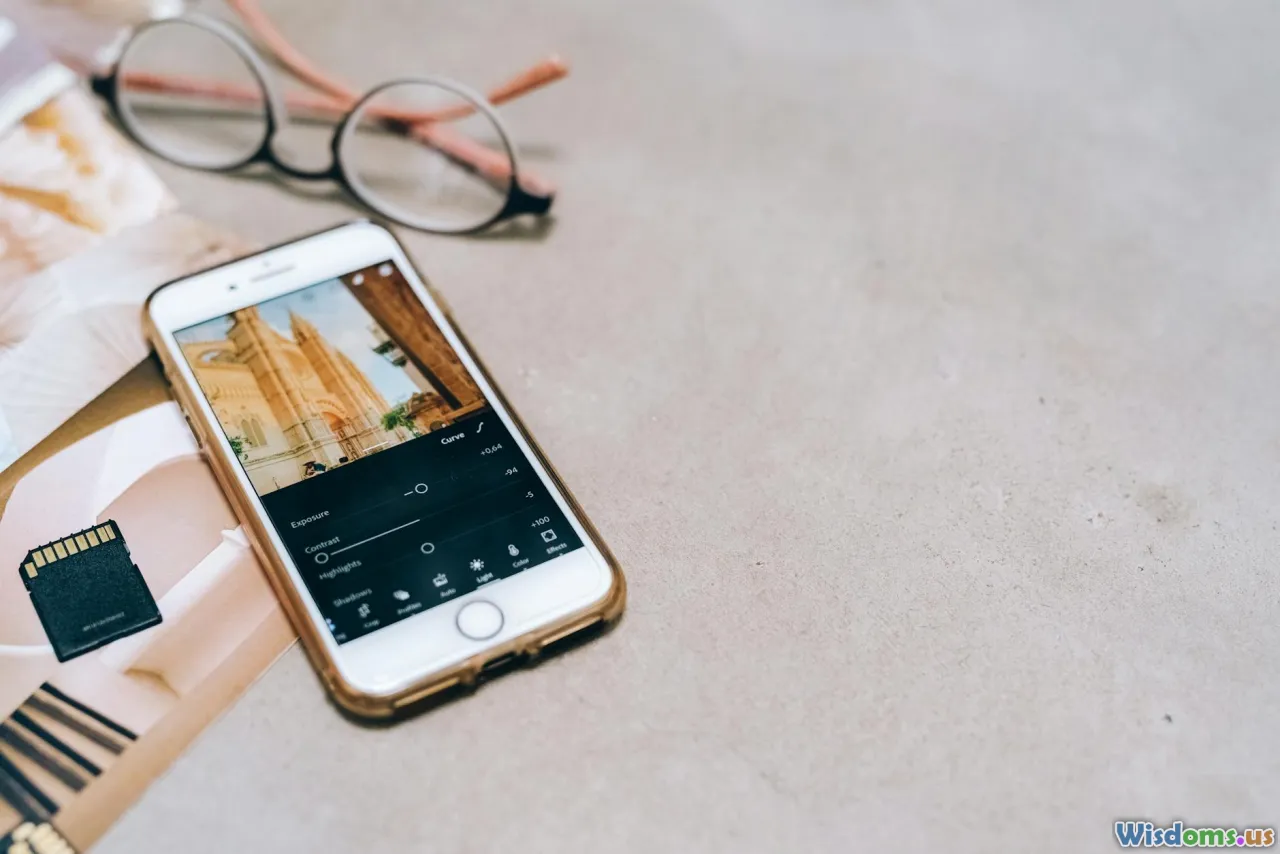
You don’t need to settle for out-of-the-box limitations. With a few handy extras, you can push mobile event photography even further.
Accessory Additions
- Clip-on Telephoto Lenses: Brands like Moment and Olloclip offer add-ons that increase zoom reach—perfect for getting that focused shot across the track.
- Mini-Gimbals: Stabilize moving shots or video pans for smoother recording (e.g., DJI Osmo Mobile).
- Portable Battery Packs: Don’t miss that winning goal because of a dead phone. High-action shooting drains batteries fast.
App Power-ups
- Manual Camera Controls: Apps like Halide or ProCam let you adjust ISO, shutter speed, and white balance.
- Advanced Editing: After the match, polish your favorites in Lightroom Mobile or Snapseed for share-worthy compositions.
Real-Life Success Stories From the Stands
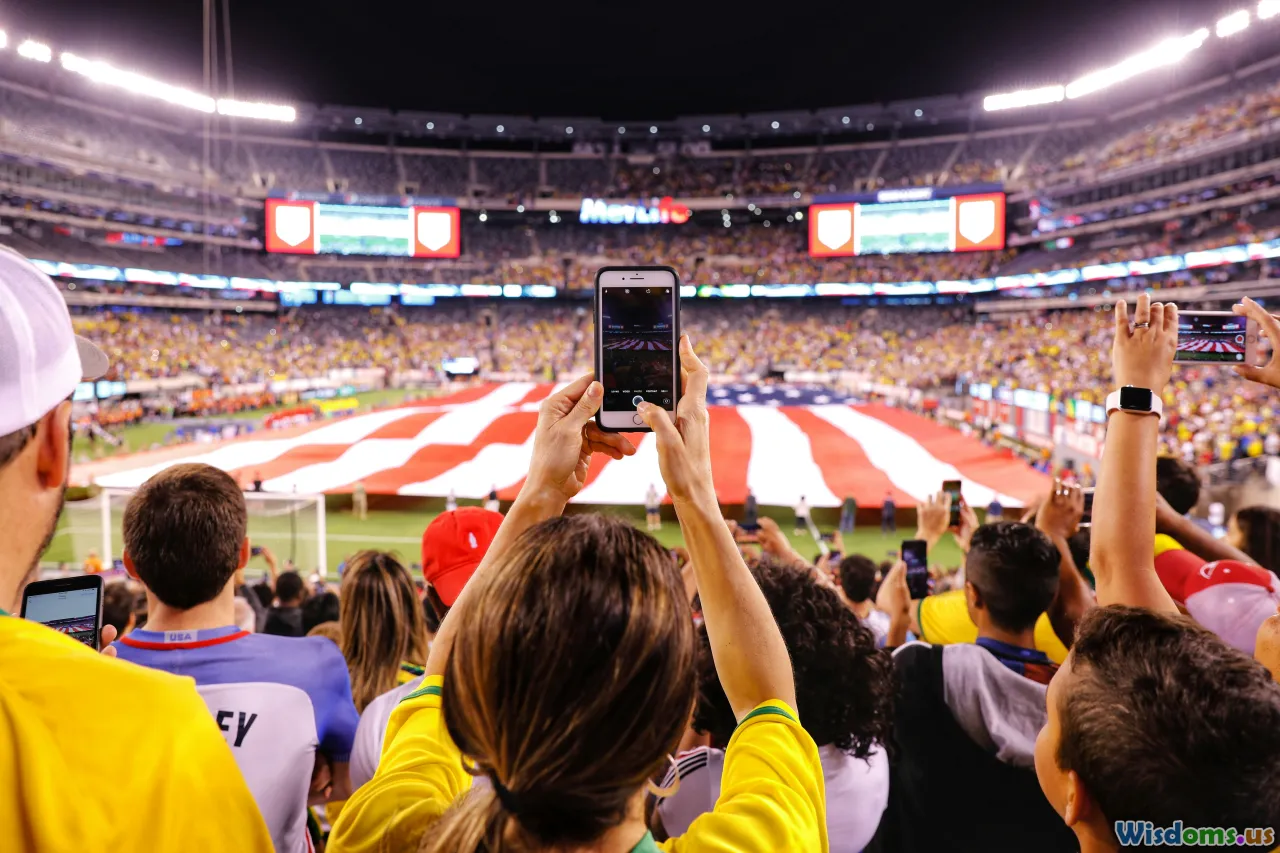
Whatever their technical limits, smartphone cameras have repeatedly proven themselves not just sufficient, but exceptional at sport events. Here are a few high-profile moments:
- In 2021, fans at Wembley filmed England’s penalty thriller at the Euro final on their phones. Viral angles and crowd shots from the stands arguably became as iconic as professional footage.
- During the 2024 NBA All-Star game, courtside attendees captured slow-motion dunks and bench celebrations more intimately than network TV could, thanks to phone access and proximity.
- Olympic fans in Tokyo turned iPhones toward skateboard debut events, shooting close-ups of gravity-defying tricks from right beside the action—moments that wouldn’t have been easy with bulky pro gear.
Photojournalists even use smartphone cameras as backup or inconspicuous alternatives in sensitive locations, proving their reliability and versatility.
Final Thoughts: Run With What You’ve Got

Can smartphone cameras truly succeed at busy sports events? For millions of everyday fans, absolutely. They deliver speed, spontaneity, and a front-row pass to sharing every wild, raw, and heart-pounding moment.
Don’t worry if your mobile pics don’t rival Sports Illustrated’s cover shots. The best camera, as the old adage goes, is the one you have with you—especially when your team scores in the dying seconds and you want to return home with an unforgettable memento and a viral video.
The race is close. As smartphone technology barrels ahead, the stands are filled with would-be photographers—each crafting their slice of sports history, phone in hand.
Rate the Post
User Reviews
Popular Posts










